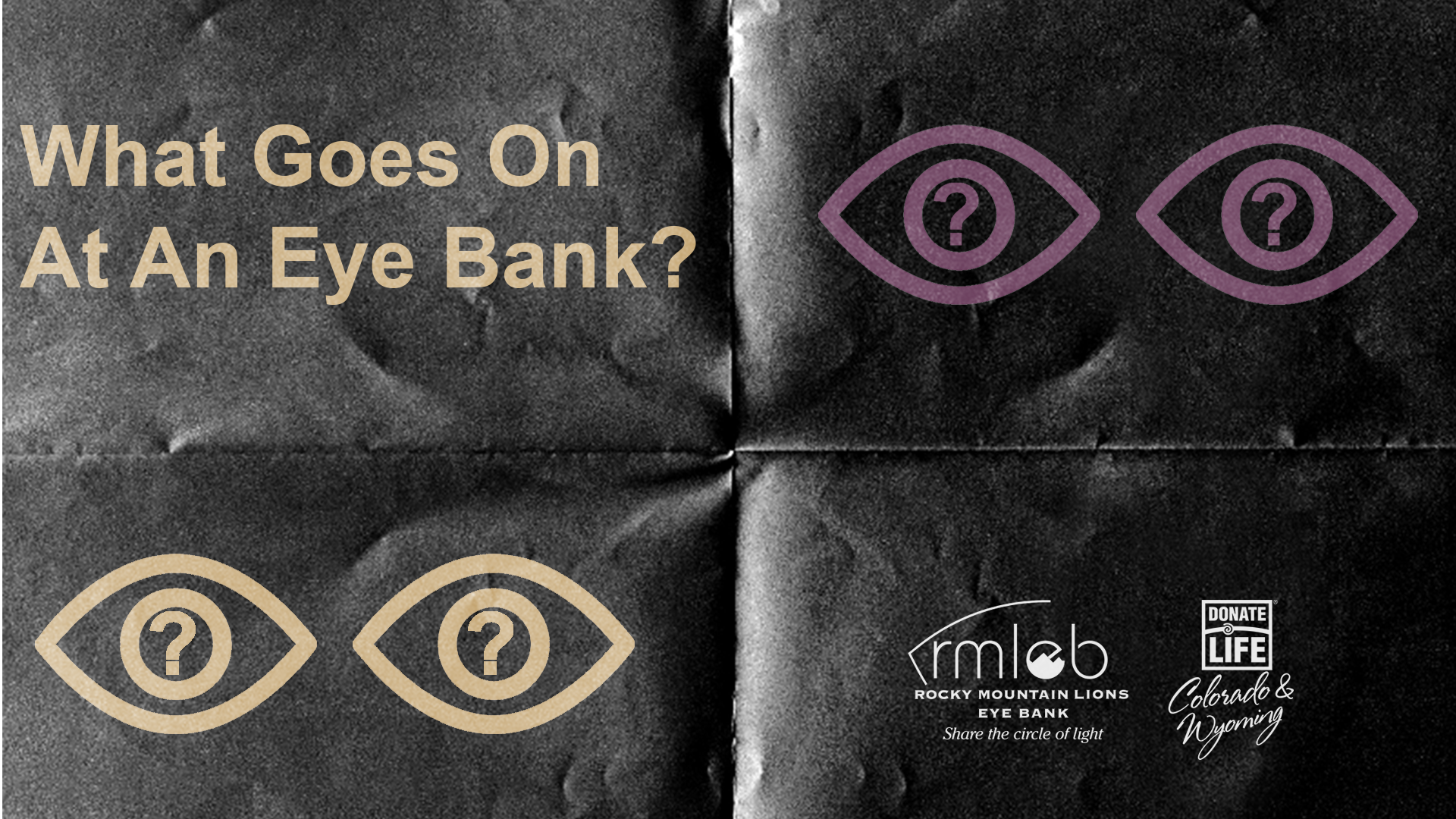What Goes On at an Eye Bank?
Behind the Scenes of Sight Restoration
By Derek Simon - May 9, 2024
As a new hire at Rocky Mountain Lions Eye Bank, I find myself immersed in the world of eye, organ and tissue donations. My position as a Community & Professional Relations Coordinator has me asking lots of questions as well as answering questions, both professionally and socially.
“What do you do for work?” is a very common question that gets asked when meeting new people. Lately I find myself satisfying people’s inquisitive nature about eye banks and the world of donations.
“What does an eye bank do?” and “How are eye banks regulated?” are some of the common questions that ensue after my employer has been revealed. I typically begin to inform them about the EBAA and what roles and departments make up an eye bank.
Eye banks play a crucial part in sight restoration not just locally but globally as well. Facilitating cornea donation and supplying tissue for transplant and research are the primary responsibilities. EBAA eye banks, as non-profit entities, obtain, examine, and provide tissue for over 85,000 sight-restoring corneal transplants each year.
These eye banks, partnered with the EBAA, provide their services in all 50 states and around the world. The majority of EBAA Member eye banks are EBAA accredited, which ensures compliance with industry regulations and criteria. Eye banks have distinct departments and operations where employees assume various positions.
Eye banks, such as the Rocky Mountain Lions Eye Bank, are often organized according to these key operations:
Donor Eligibility: Review donors' medical and social history to assess suitability of tissue for transplant or research/training.
Recovery: Procure ocular tissue from deceased donors who have agreed through first-person authorization or with a next of kin's authorization.
Evaluation: Evaluate tissue quality utilizing microscopes and other equipment.
Processing: Prepare tissue for transplant based on specific parameters dictated by surgeons in our multi-room pods that meet stringent environmental standards, and sterilization of laboratory instruments.
Distribution: Collaborate with surgeons, surgical centers and other eye banks to fulfill tissue needs.
Quality Assurance: Create, execute, and screen quality frameworks to maintain compliance with accreditation authorities.
Professional Relations & Community Outreach: Cultivate connections with the public and professional communities, including (but not limited to) hospices, funeral homes, medical examiner/coroner offices, and other organizations.
Many factors play into the success of an eye bank and as a Community and Professional Relations Coordinator I feel that informing people of our existence and what we do is a key aspect of my role. Talking to new acquaintances and the general public about my job gives me an opportunity to do this, and after reading this blog, it is my hope you come away more informed as well.
Go Back “What do you do for work?” is a very common question that gets asked when meeting new people. Lately I find myself satisfying people’s inquisitive nature about eye banks and the world of donations.
“What does an eye bank do?” and “How are eye banks regulated?” are some of the common questions that ensue after my employer has been revealed. I typically begin to inform them about the EBAA and what roles and departments make up an eye bank.
Eye banks play a crucial part in sight restoration not just locally but globally as well. Facilitating cornea donation and supplying tissue for transplant and research are the primary responsibilities. EBAA eye banks, as non-profit entities, obtain, examine, and provide tissue for over 85,000 sight-restoring corneal transplants each year.
These eye banks, partnered with the EBAA, provide their services in all 50 states and around the world. The majority of EBAA Member eye banks are EBAA accredited, which ensures compliance with industry regulations and criteria. Eye banks have distinct departments and operations where employees assume various positions.
Eye banks, such as the Rocky Mountain Lions Eye Bank, are often organized according to these key operations:
Donor Eligibility: Review donors' medical and social history to assess suitability of tissue for transplant or research/training.
Recovery: Procure ocular tissue from deceased donors who have agreed through first-person authorization or with a next of kin's authorization.
Evaluation: Evaluate tissue quality utilizing microscopes and other equipment.
Processing: Prepare tissue for transplant based on specific parameters dictated by surgeons in our multi-room pods that meet stringent environmental standards, and sterilization of laboratory instruments.
Distribution: Collaborate with surgeons, surgical centers and other eye banks to fulfill tissue needs.
Quality Assurance: Create, execute, and screen quality frameworks to maintain compliance with accreditation authorities.
Professional Relations & Community Outreach: Cultivate connections with the public and professional communities, including (but not limited to) hospices, funeral homes, medical examiner/coroner offices, and other organizations.
Many factors play into the success of an eye bank and as a Community and Professional Relations Coordinator I feel that informing people of our existence and what we do is a key aspect of my role. Talking to new acquaintances and the general public about my job gives me an opportunity to do this, and after reading this blog, it is my hope you come away more informed as well.
